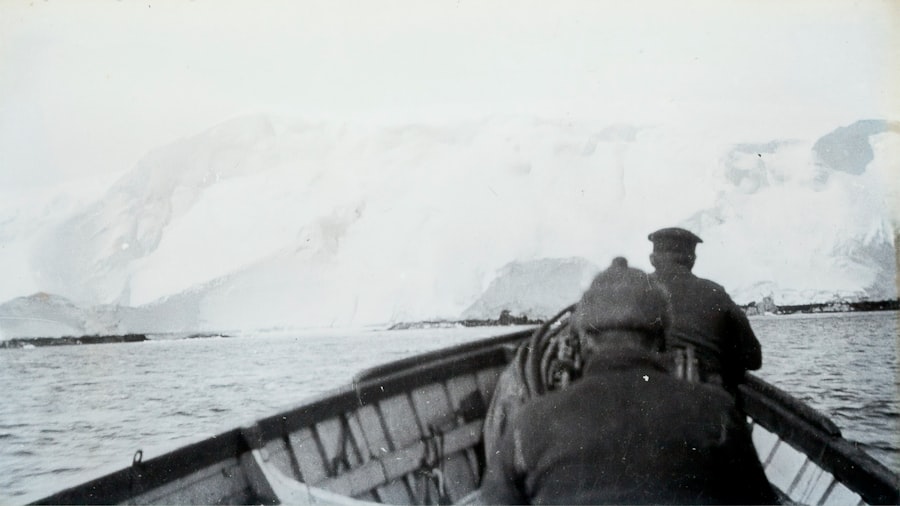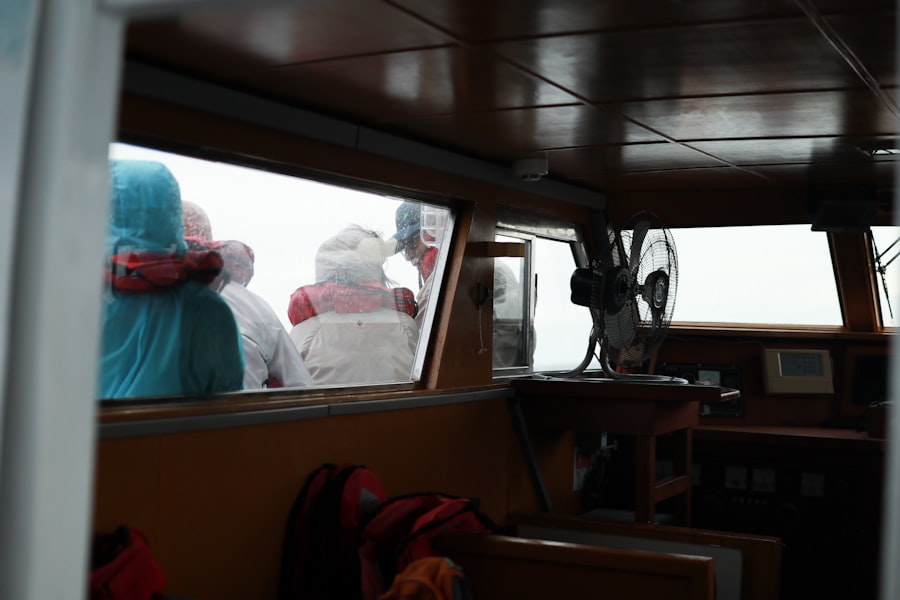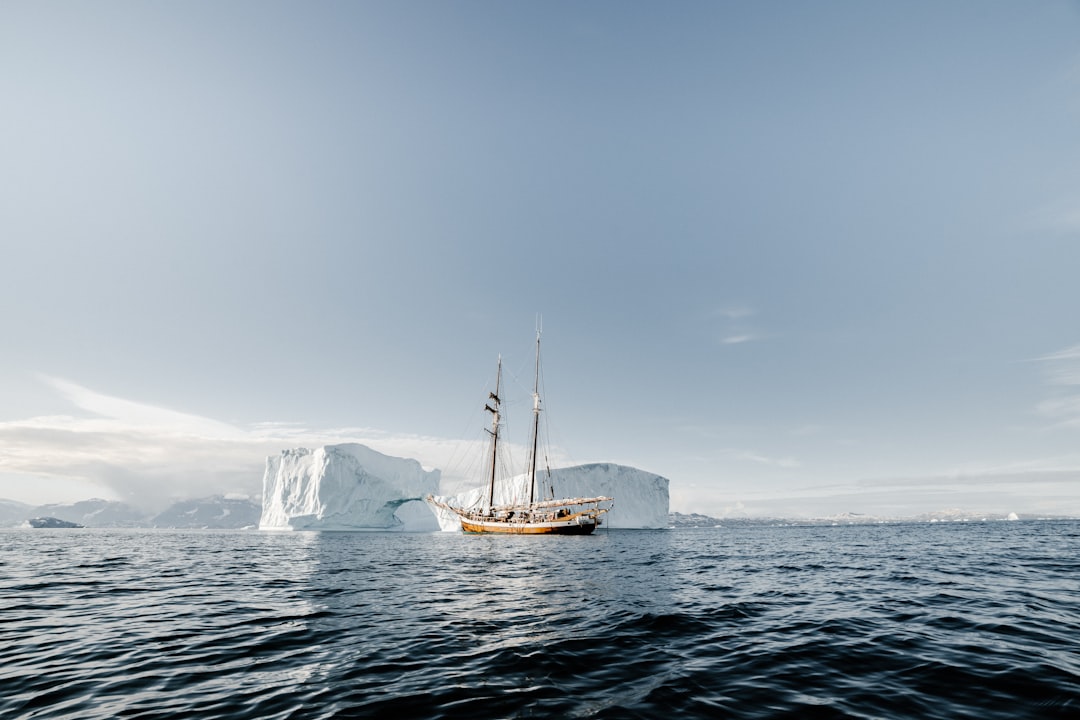The Quark Drake Passage, a formidable stretch of ocean that separates South America from Antarctica, is renowned for its tumultuous waters and breathtaking scenery. This narrow body of water, often regarded as one of the most challenging maritime routes in the world, has captured the imagination of explorers, scientists, and adventurers alike. The passage is not only a geographical marvel but also a vital ecological corridor that plays a significant role in the global climate system.
Its unique position makes it a focal point for marine biodiversity and a critical area for research on climate change and oceanic health. As one embarks on an exploration of the Quark Drake Passage, they are greeted by a landscape that is both awe-inspiring and intimidating. The passage is characterized by its unpredictable weather patterns, towering waves, and stunning ice formations.
For those who dare to navigate these waters, the experience promises to be one of both challenge and wonder. The allure of the Drake Passage lies not only in its natural beauty but also in the rich history and cultural significance that it embodies, making it a destination that beckons adventurers from all corners of the globe.
Key Takeaways
- The Quark Drake Passage is a treacherous and breathtakingly beautiful stretch of water that connects the Atlantic and Pacific Oceans.
- The history and significance of the Drake Passage dates back to the age of exploration and has played a crucial role in global ocean currents and climate patterns.
- Planning and preparing for an ocean exploration adventure in the Drake Passage requires careful consideration of weather, navigation, and safety measures.
- Navigating the treacherous waters of the Drake Passage presents challenges and dangers for sailors, requiring skill and experience to safely traverse the area.
- The Drake Passage is home to a diverse array of wildlife and natural wonders, providing opportunities for observing and studying the unique ecosystem.
The History and Significance of the Drake Passage
The history of the Drake Passage is steeped in exploration and discovery.
Drake’s journey marked one of the first recorded crossings of this treacherous stretch of ocean, paving the way for future explorers who sought to uncover the mysteries of Antarctica and beyond.
Over the centuries, the Drake Passage has served as a gateway for scientific expeditions, whaling fleets, and even military operations, each leaving their mark on the region’s rich tapestry of history. The significance of the Drake Passage extends beyond its historical context; it is also a vital ecological zone that influences global weather patterns and ocean currents. The convergence of cold Antarctic waters with warmer currents from the Pacific and Atlantic Oceans creates a unique marine environment that supports a diverse array of wildlife.
This ecological importance has drawn researchers to the area, eager to study its complex ecosystems and understand their role in the broader context of climate change. As such, the Drake Passage stands as a testament to human curiosity and resilience, embodying both the spirit of exploration and the urgent need for conservation.
Planning and Preparing for an Ocean Exploration Adventure

Planning an adventure through the Quark Drake Passage requires careful consideration and preparation. Adventurers must take into account various factors, including weather conditions, vessel selection, and safety protocols. The unpredictable nature of the passage means that travelers must be equipped with knowledge about potential challenges they may face during their journey.
This includes understanding how to navigate rough seas, recognizing signs of changing weather patterns, and being prepared for emergencies that may arise. In addition to logistical considerations, prospective explorers should also focus on physical preparation. The journey through the Drake Passage can be physically demanding, requiring participants to be in good health and capable of handling the rigors of ocean travel.
Engaging in fitness training, familiarizing oneself with sailing terminology, and participating in safety drills can enhance one’s readiness for this adventure. Furthermore, travelers should educate themselves about the unique ecosystems they will encounter, fostering a deeper appreciation for the natural wonders that await them.
Setting Sail: Navigating the Treacherous Waters of the Drake Passage
| Metrics | Data |
|---|---|
| Distance | 600 miles |
| Duration | 2-3 days |
| Weather | Unpredictable |
| Waves | Up to 30 feet |
| Wildlife | Whales, dolphins, seabirds |
As adventurers set sail into the Drake Passage, they are immediately confronted with its formidable reputation. The waters are notorious for their rough conditions, with waves that can reach heights of over 30 feet during storms. Navigating these treacherous waters requires skilled seamanship and an understanding of maritime navigation techniques.
Experienced captains often rely on advanced technology and weather forecasting tools to chart a safe course through this challenging environment. The experience of sailing through the Drake Passage is both exhilarating and humbling. As vessels traverse this stretch of ocean, travelers are often struck by the sheer power of nature surrounding them.
The rhythmic crashing of waves against the hull serves as a reminder of the ocean’s might, while moments of calm can reveal stunning vistas of icebergs and distant landmasses. For many adventurers, this journey becomes a transformative experience—one that fosters a profound respect for the natural world and its unpredictable beauty.
Wildlife and Natural Wonders: Observing the Breathtaking Beauty of the Passage
The Quark Drake Passage is not only known for its challenging navigation but also for its remarkable biodiversity. As explorers traverse these waters, they are often treated to sightings of various marine life, including whales, seals, and an array of seabirds. The passage serves as a critical feeding ground for species such as humpback whales and orcas, which migrate through these waters in search of abundant food sources.
Observing these majestic creatures in their natural habitat is a highlight for many adventurers. In addition to its wildlife, the natural wonders of the Drake Passage are truly breathtaking. Towering icebergs drift gracefully through the water, their brilliant blue hues contrasting sharply with the deep ocean depths.
Glacial formations along the coastline create dramatic landscapes that captivate all who witness them. The interplay between light and ice can produce stunning visual displays, particularly during sunrise and sunset when colors dance across the horizon. For those fortunate enough to explore this region, these moments become cherished memories that linger long after their journey has ended.
Exploring the Underwater World: Diving into the Depths of the Drake Passage

For those seeking an even deeper connection with the marine environment, diving into the depths of the Drake Passage offers an unparalleled experience. The underwater world beneath these turbulent waters is teeming with life, from vibrant coral reefs to schools of colorful fish. Divers have the opportunity to encounter unique species that thrive in this cold-water ecosystem, including various types of sea stars, anemones, and even elusive Antarctic krill.
Diving in such challenging conditions requires specialized training and equipment. Divers must be prepared for cold temperatures and strong currents while also adhering to strict safety protocols. However, those who take on this challenge are often rewarded with breathtaking underwater vistas that few have had the privilege to witness.
The experience fosters a profound appreciation for marine conservation efforts and highlights the importance of protecting these fragile ecosystems from human impact.
Research and Conservation Efforts in the Drake Passage
The Quark Drake Passage has become a focal point for scientific research and conservation initiatives aimed at understanding and protecting its unique ecosystems. Researchers from around the world flock to this region to study its marine life, ocean currents, and climate patterns. Their findings contribute to a greater understanding of how changes in temperature and salinity affect marine biodiversity and global climate systems.
Conservation efforts in the Drake Passage are crucial as human activities continue to impact this pristine environment. Organizations dedicated to marine conservation work tirelessly to raise awareness about issues such as overfishing, pollution, and climate change.
The ongoing research conducted in this region not only informs conservation strategies but also inspires future generations to appreciate and safeguard our planet’s natural wonders.
Challenges and Dangers of Exploring the Quark Drake Passage
While exploring the Quark Drake Passage can be an exhilarating adventure, it is not without its challenges and dangers. The unpredictable weather patterns can turn calm seas into raging storms within minutes, posing significant risks to vessels navigating these waters. Adventurers must remain vigilant and adaptable, ready to respond to changing conditions at a moment’s notice.
In addition to weather-related challenges, there are also inherent dangers associated with wildlife encounters. While observing marine life can be thrilling, it is essential for explorers to maintain a safe distance from larger animals such as whales or seals. Understanding animal behavior is crucial for ensuring both human safety and animal welfare during encounters in their natural habitat.
By respecting wildlife boundaries and adhering to safety guidelines, adventurers can minimize risks while still enjoying the wonders of this remarkable region.
The Impact of Climate Change on the Drake Passage
The effects of climate change are increasingly evident in the Quark Drake Passage, making it a critical area for monitoring environmental changes. Rising ocean temperatures have led to shifts in marine species distribution, affecting food webs and ecosystem dynamics. Additionally, melting glaciers contribute to rising sea levels and alter salinity levels within these waters.
Researchers are actively studying these changes to better understand their implications for both local wildlife and global climate patterns. The data collected from expeditions in the Drake Passage provides valuable insights into how climate change is reshaping our oceans and influencing weather systems worldwide. As stewards of this fragile environment, it is imperative for explorers and scientists alike to advocate for sustainable practices that mitigate human impact on these vital ecosystems.
Cultural and Historical Discoveries in the Drake Passage
Beyond its natural wonders, the Quark Drake Passage holds cultural and historical significance that enriches its narrative. Indigenous peoples have long inhabited regions surrounding these waters, relying on marine resources for sustenance while developing rich cultural traditions tied to their environment. Understanding these cultural connections adds depth to any exploration of the passage.
Moreover, historical discoveries related to early explorers who traversed these waters provide insight into humanity’s quest for knowledge and adventure. Shipwrecks from past expeditions serve as poignant reminders of both triumphs and tragedies faced by those who dared to navigate this challenging route. By honoring these stories through education and preservation efforts, explorers can foster a deeper appreciation for both cultural heritage and maritime history.
Reflecting on the Adventure of Exploring the Quark Drake Passage
Exploring the Quark Drake Passage is an adventure that transcends mere travel; it is an opportunity for personal growth, connection with nature, and engagement with pressing global issues such as climate change and conservation efforts. As adventurers navigate its tumultuous waters, they are reminded of both their own vulnerability in the face of nature’s power and their responsibility as stewards of our planet. The memories forged during this journey—whether through encounters with majestic wildlife or moments spent marveling at breathtaking landscapes—become lasting impressions that inspire future generations to appreciate our world’s natural wonders.
Ultimately, exploring the Quark Drake Passage serves as a powerful reminder that adventure lies not only in discovery but also in understanding our place within this intricate web of life on Earth.
Ocean exploration has always been a fascinating subject, and the Drake Passage is one of the most intriguing areas for researchers and adventurers alike. Known for its challenging conditions and rich biodiversity, the Drake Passage offers a unique opportunity for ocean explorers like Quark to study the dynamic interactions between the Atlantic and Pacific Oceans. For those interested in learning more about the challenges and discoveries associated with ocean exploration, you might find this related article insightful. It delves into the various aspects of oceanic expeditions and the technological advancements that have made these explorations possible.
WATCH NOW! Drake Passage: Earth’s Deadliest Waters Revealed
FAQs
What is the Ocean Explorer Quark Drake Passage?
The Ocean Explorer Quark Drake Passage is a cruise expedition that takes passengers through the infamous Drake Passage, a body of water between the southern tip of South America and the South Shetland Islands of Antarctica.
What can passengers expect to see on the Ocean Explorer Quark Drake Passage expedition?
Passengers can expect to see stunning landscapes, diverse wildlife including penguins, seals, and whales, as well as icebergs and glaciers. The expedition also offers opportunities for bird watching and photography.
What is the duration of the Ocean Explorer Quark Drake Passage expedition?
The duration of the Ocean Explorer Quark Drake Passage expedition typically ranges from 10 to 23 days, depending on the specific itinerary and activities included.
What are the accommodations and amenities like on the Ocean Explorer Quark Drake Passage expedition?
The Ocean Explorer Quark Drake Passage expedition offers comfortable accommodations, delicious meals, and a range of amenities including observation decks, lecture rooms, and a variety of onboard activities to enhance the passenger experience.
Is the Ocean Explorer Quark Drake Passage expedition suitable for all ages?
The Ocean Explorer Quark Drake Passage expedition is suitable for adults of all ages. However, it may not be suitable for young children or individuals with certain medical conditions due to the remote and challenging nature of the expedition.
What should passengers pack for the Ocean Explorer Quark Drake Passage expedition?
Passengers should pack warm, waterproof clothing, sturdy footwear, and essential personal items. It is also recommended to bring binoculars, a camera, and any necessary medications.
